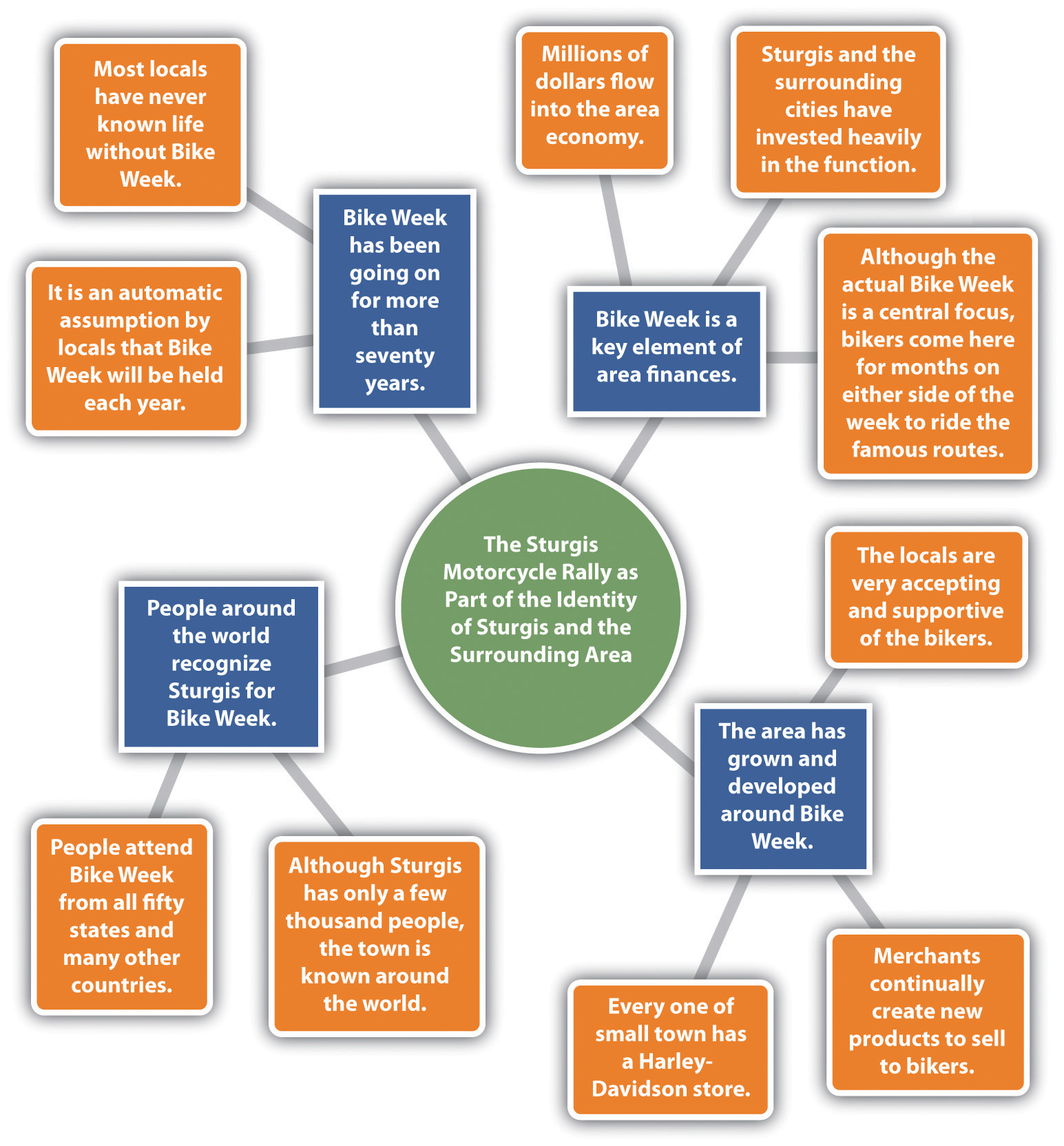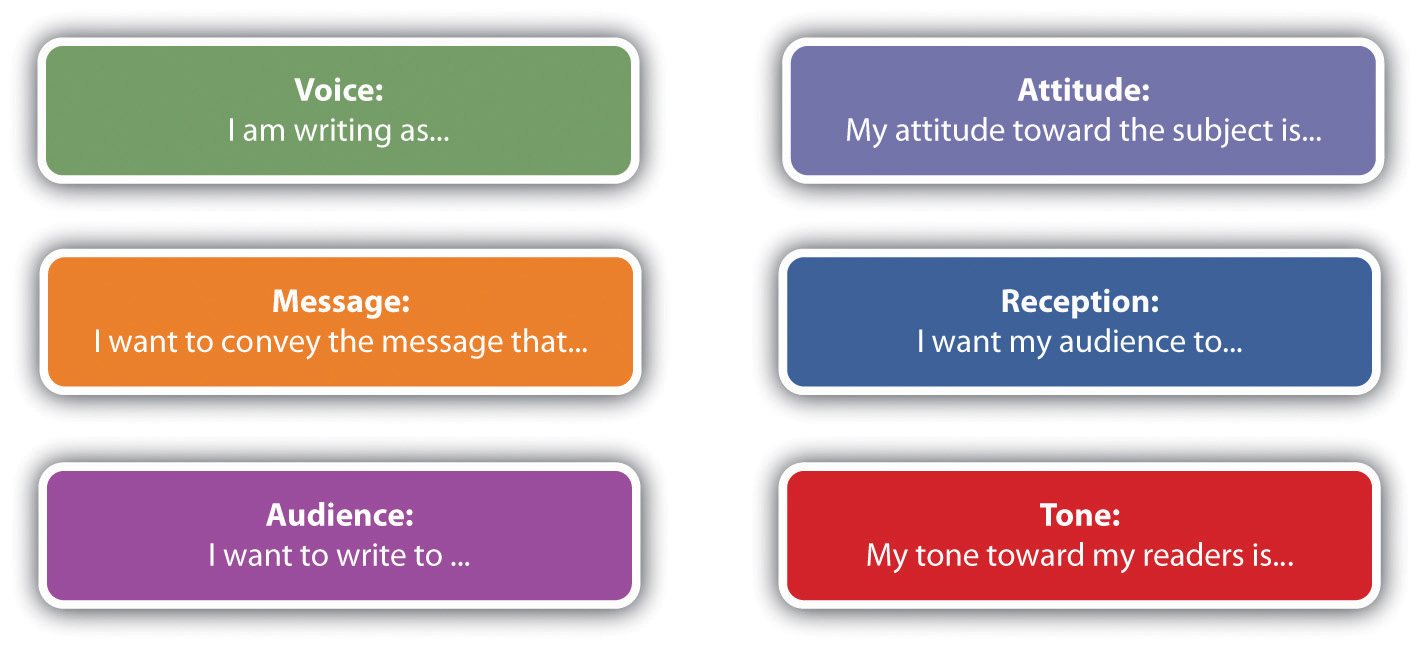13
Dr. Karen Palmer
After you have settled on a topic, you are ready to explore general ideas that you will include when you start writing. Doing so saves time and energy. There are many ways to identify the purpose and direction of your paper, and you can generate these ideas with whatever brainstorming method works best for you, such as browsing the Internet to do an interconnected search from topic to topic, talking or texting with others, creating related visuals, asking yourself questions, freewriting and mapping

Freewriting and Mapping
Freewriting
Freewriting requires finding a quiet place to write without distraction. Most versions involve starting with a word or phrase (usually your topic) and writing (or typing) about it without stopping for five minutes. It’s helpful to set a timer for each round of freewriting. After the first five-minute period, you examine your text for any phrases or words that look interesting to you. Circle them (or if you are typing, highlight, italicize, bold, or underline them).
In the second round, you freewrite for another five uninterrupted minutes on your choice of the most interesting word or phrase from your first freewrite. Sometimes even a third round can help you narrow the topic further.
For each round of freewriting, you should be unconcerned about your writing’s grammar or mechanics, how it would look to an outside audience, or even whether it would make sense to anyone but you. Freewriting is all about idea generation and exploration.
Mapping
Mapping is a great visual means of gathering your ideas. Mapping lets you add as many ideas as you can think of and organize them as you go along. You have four general options for mapping.
- Use concept-mapping websites such as MindMeister (http://www.mindmeister.com/).
- Create your own circles and lines within a word processing program.
- Draw your map by hand.
No one option is superior to another. You should choose the option that works best for you. Using whichever option you choose, the point is to start with your main topic and then think of related subtopics and, for each subtopic, to think of supporting details resulting in a visual that shows the relationships between the key points of your writing plan. Since mapping is actually a visual brainstorming process, you do not have to generate your ideas in an orderly fashion. When you think of an idea, you can add it wherever it fits across the map.
In the concept-mapping software, you will be able to choose the level of the point you will add as well as the larger idea to which you want to attach each point. If you are creating your concept map structure yourself, make it clear to which level each addition belongs.
Study the image below for clarification on how the process works. This map was made in Microsoft Word by creating circles, squares, and lines and placing them by hand into position. You can use all circles or all squares or whatever shape(s) you would like. This map uses a combination of squares and circles to make the subtopics stand out clearly from the details. This map also uses color to differentiate between levels.

When the ideas stop flowing, put your map away and return to it later for another brainstorming session.
Keep your freewrites and maps close at hand and feel free to add tidbits when they come to you. Get into the habit of keeping a writing pad and pen or pencil (or just your cell phone) next to your bed, so that you can jot down or text ideas as they come to you in the middle of the night. When you are comfortable that your map offers a good representation of the points you want to include in your paper, use it as a guide during the writing process.
Exercise 1
1. Choose a topic of interest to you and freewrite for at least two five-minute rounds.
2. Choose a topic of interest to you and create a map to show some ideas you might include if you were writing about the topic.
Developing Your Purposes for Writing
After you have settled on a specific writing topic and thought through your writing through pre-writing activities, it’s time to return to some of the basic principles of rhetoric so that you can think through your real purposes for writing and explore the key details of your rhetorical situation.
PUrpose
You may think that purpose can be boiled down to one of these single verbs or phrases:
-
- To analyze
- To ask for support
- To call to action
- To clarify
- To convince
- To counter a previously stated opinion
- To describe
- To entertain
- To inform
- To make a request
- To make people think
- To persuade
- To share feelings
- To state an opinion
- To summarize
However, your real purposes for writing are really more complicated, interesting, and dynamic than this simple list. Not only do you want to make your audience feel or think a certain way about your message, but you also want to explore and refine your own thoughts and feelings about that message, and furthermore, you want to establish a certain kind of relationship with your audience through the act of conveying your message to them.
Audience
Sometimes your instructor will specify the audience for an essay assignment, but more often than not, this choice will be left up to you. If it’s your call, ask yourself, “Who would benefit the most from receiving this message?” Not asking that simple question, not choosing a specific audience for your essay, will be a missed opportunity to sharpen your skills as a communicator.
By identifying your audience, you can conjecture how much your readers will know about your topic and thus gauge the level of information you should provide. You can determine what kind of tone is best for your audience (e.g., formal or informal, humorous or serious). Based on what you know about your audience, you can even decide the form you want your writing to take (e.g., whether to write a descriptive or more persuasive essay). Knowing your audience will guide many of the other choices you make along the way.
Message
Regardless of whether your topic is assigned to you or you come up with it on your own, you still have some room to develop your message. Be prepared to revise your message once you have fleshed out your own thinking about it and sharpened your sense of audience and purpose thinking.
Voice
Regardless of whether you’re writing in an academic or a nonacademic context, you draw from a range of voices to achieve a variety of purposes. If you are writing an essay to fulfill a class assignment, with your instructor as your primary if not exclusive audience, then your voice has pretty much been established for you. In such an instance, you are a student writing in a traditional academic context, subject to the evaluation of your instructor as an expert authorized to judge your work. But even in this most restrictive case, you should still try to develop a distinctive voice based on what you hope to accomplish through your writing.
Here are some questions that can help you as you make rhetorical decisions about your writing project.

“Your Rhetorical Situation” image licensed under CC BY NC SA.
Resource
Near the beginning of the writing project, you could write up a preliminary statement of purpose based on how you complete these sentences. Here is how a student might answer questions about voice, message, audience, attitude, reception, and tone based on the Sturgis motorcycle project:
Voice: I am writing as…
…a person unfamiliar with South Dakota culture who has been assigned the task of writing about it.
Message: I want to convey the message that…
…the Sturgis Motorcycle Rally is an interesting phenomenon of popular culture.
Audience: I want to write to…
…my teacher and the other members of my writing group.
Attitude: My attitude toward the subject is…
…pretty neutral right now, bordering on bored, until I find out more about the topic.
Reception: I want my audience to…
…know that I know how to research and write about any topic thrown at me.
Tone: My tone toward my readers is…
…semiformal, fairly objective, like a reporter, journalist, or anthropologist.
Remember, the writing process is a recursive one, so be open to the idea of returning to these questions several times over the course of your writing project.
Here’s an example of how the student writer’s responses to the rhetorical situation changed as he wrote the paper on the Sturgis Motorcycle Rally essay:
Voice: I am writing as…
…a kind of social historian and observer of a specific example of popular culture.
Message: I want to convey the message that…
…the Sturgis Motorcycle Rally has become an important part of the identity of Sturgis and the surrounding area.
Audience: I want to write to…
…my instructor and classmates—but also to the citizens of Sturgis, South Dakota.
Attitude: My attitude toward the subject is…
…neutral to positive. In general I think the rally has been good for Sturgis over the years.
Reception: I want my audience to…
…understand and appreciate Sturgis Motorcycle Rally, and maybe to think about how something like it could work well in our community.
Tone: My tone toward my readers is…
…informal but informative, and occasionally humorous, to fit the craziness of Sturgis Motorcycle Rally.
Exercise 2
1. Describe five possible topics you could use as the basis for an opinion essay.
2. You are being asked to describe an important event in your childhood. What form of writing from the list in this section would be most appropriate?
3. You are writing a letter of application for a college scholarship sponsored by a local business. For what audiences would you write the letter?
4. You are writing an opinion essay and submitting it as a letter to the editor at your local newspaper. For what audiences would you write this letter?
Attributions
- “Freewriting and Mapping” licensed under CC BY NC SA 3.0.
- “Developing Your Purposes for Writing” licensed under CC BY NC SA 3.0.
